
Click here to view image
Men’s necklace, circa 1880 (Indians of the Southern Plains) and)
Tanned leather, metal (American coins of ten cents fused and transformed into grains)

Click here to view image
Men’s necklace, circa 1880 (Indians of the Southern Plains) and)
Tanned leather, metal (American coins of ten cents fused and transformed into grains)


Click here to view image
Necklace for girl, end of 800 (Kiova or Comanche invoice)
Shell, hard stones, cotton thread
Necklace for girl; probably the result of commercial exchanges between the Pueblo of Taos and the Indians of the Plains of the South.
The turquoise near the Pueblo had protective function for the little girls

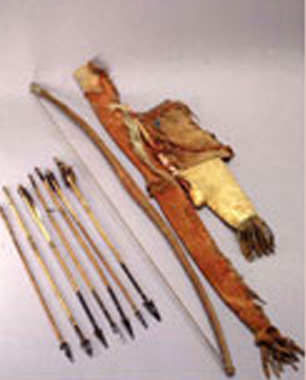
Click here to view image
Quiver, arrows, bow, case for bow, mace and amulet, end of 800 (Plains Indians)
Vedi descrizione
Quiver, arrows, bow, case for bow, mace (symbol of value and courage), amulet (represents the spirit of the favorite horse)
Quiver: tanned leather, hard stones, glass countries (point "lazy")
Arrows: decorticated, polished and engraved wooden rod, pens, iron, animal fiber
Arco: dehusked, polished and curved wood, animal fibre, tanned and dyed leather
Bow case: tanned and dyed leather
Mace: dehusked wood, tanned leather, stone, glass countries
Amulet: decorticated, polished and painted wood, horsehair

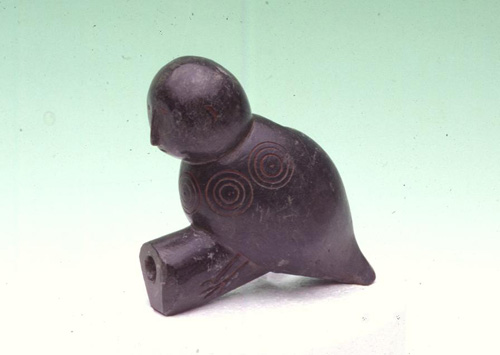
Click here to view image
Collezione Missioni Cattoliche Americane 1893
Pipe cooker, 1880 - 1890 circa (typical East Dakota motif, Yankton, Ojibway material)
C.A.342
Ohio (U.S.A.)
La steatite è stata scolpita, levigata e incisa con attrezzi metallici.
Cerimoniale. Incontri intertribali con accordi da sancire.
Bird-shaped pipe cooker with lateral engravings in concentric circles (symbolizing the circles of life)


Click here to view image
Ceremonial mace, 1865 - 1875 circa (West Dakota, Brulee)
Veal horn, leather, clay, dehusked and polished wood, feathers
Ceremonial club (used in the dances preceding the buffalo hunt)

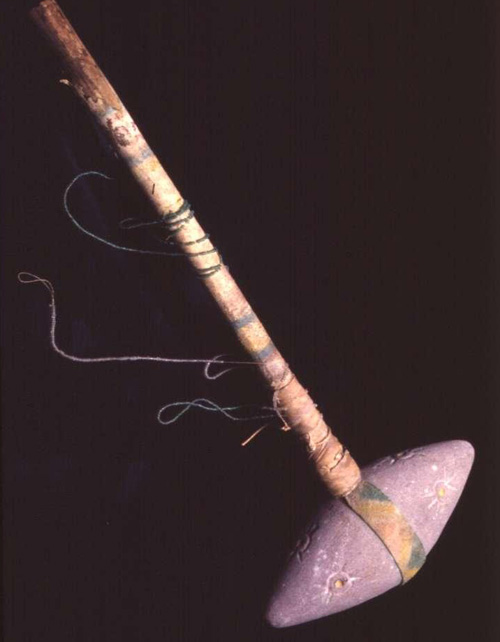
Click here to view image
War mace, circa 1870, (Teton Dakota)
Polished, engraved and painted siliceous stone, dehusked wood, tanned leather, with glass content
Two-pointed war club (commonly called "skull-splitter"); it was used in hand-to-hand combat even after the appearance of firearms, as a symbol of bravery and valor.

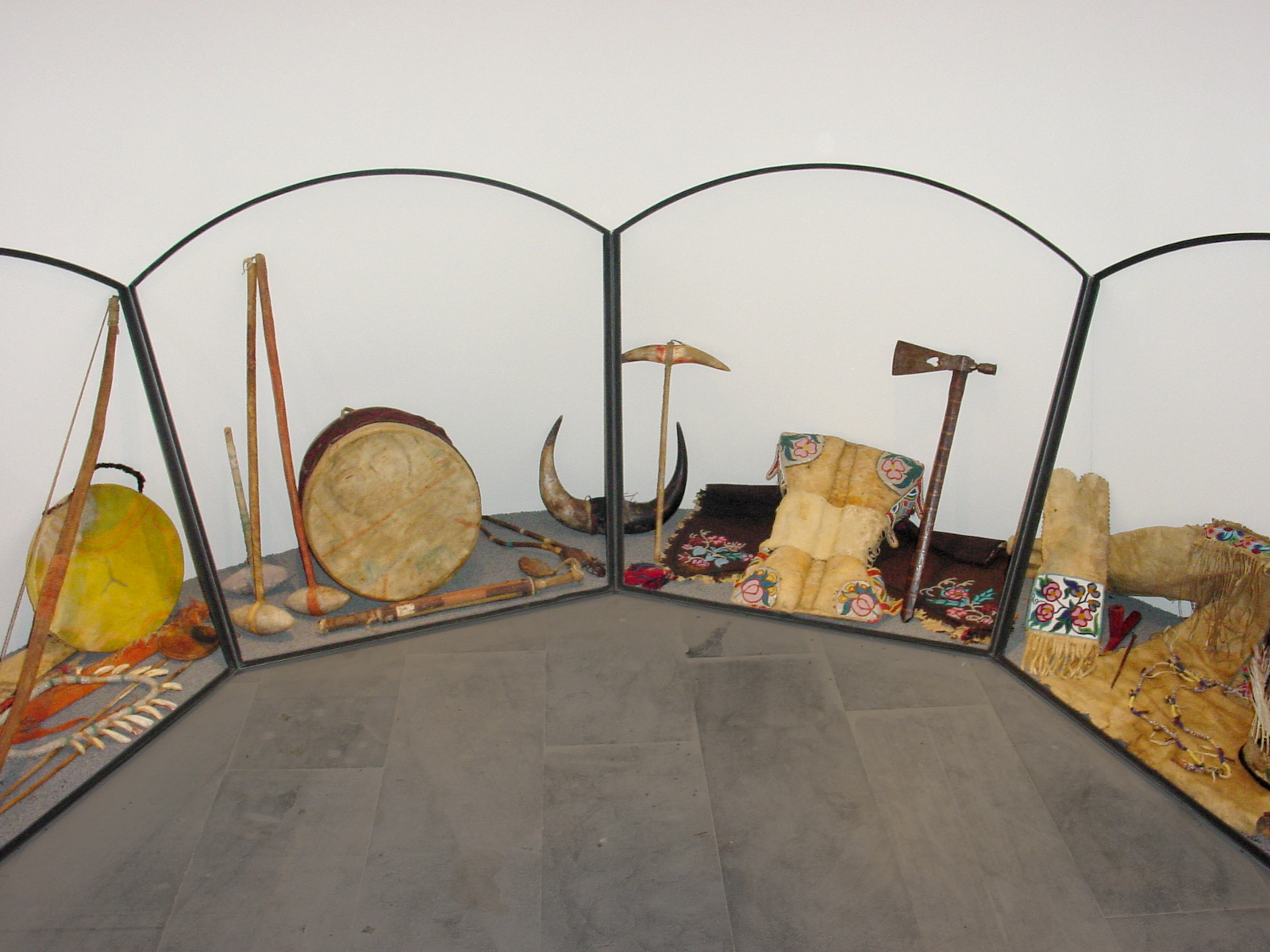
Click here to view image
Installation North American indigenous peoples

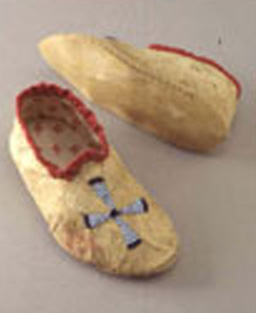
Click here to view image
Loafers for boy/girl, circa 1885 (East Dakota - Yankton)
Tanned deer leather, woven, glass-beamed ("lazy" stitch embroidery)
Loafers for boy/girl, with embroidery depicting the protective Morning Star

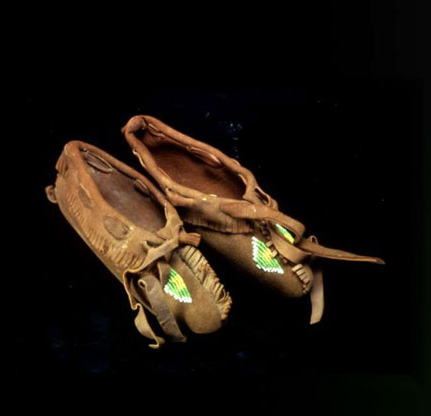
Click here to view image
Loafers for boy/girl, circa 1890 (East Dakota - Sioux Santee)
Commercial leather, vegetable fibre, glass count ("lazy" stitch embroidery)
Loafers for boy/girl, with embroidery depicting the protective Morning Star

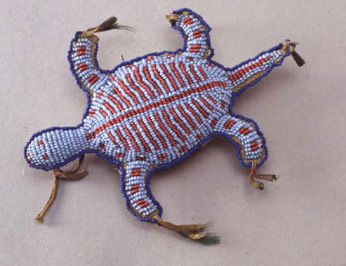
Click here to view image
Amulet
Collezione Missioni Cattoliche Americane 1893
Amulet
XIX - 1851
C.A.454
Nord Dakota (U.S.A.)
Per realizzare questi amuleti si utilizzava una pelle di cervide conciata, che veniva tagliata a forma di lucertola per i maschi o di tartaruga per le femmine.<br>Per la conciatura la pelle veniva tesa su dei pioli e con un raschiatoio si eliminavano residui di carne e cartilagini, quindi veniva lasciata stesa al sole per parecchi giorni. A questo punto la pelle veniva capovolta per rimuovere il pelo, tenuta a mollo e strofinata con una mistura di grassi animali per ammorbidirla. Dopo averla lasciata nuovamente asciugare, veniva stirata e lavorata sulle due facce con una correggia ritorta di cuoio grezzo.<br>La parte inferiore e quella superiore dell'amuleto venivano cucite insieme sui bordi, e la superficie superiore era rivestita con aculei di porcospino. Gli aculei venivano divisi a seconda della misura, ammorbiditi in bocca e, presso alcune tribù, spaccati; quindi venivano appiattiti con i denti o con le unghie. In un periodo più tardo, in seguito al contatto e ai conseguenti scambi con gli europei, gli aculei furono sostituiti da conterie di vetro o di porcellana policrome. Le estremità degli arti, della testa e della coda erano generalmente decorate con piccoli coni metallici.
Contenere il cordone ombelicale del neonato per la sua protezione durante la vita. Appeso alla culla e successivamente fissato all'abito, accompagnava il proprietario fino alla morte. Subito dopo la nascita.
Indiani d'America: Fiori e vita dalle collezioni del Museo etnografico Castello D'Albertis - Genova/ Museo d'arte orientale E.Chiossone
Tortoise-shaped container with the upper surface covered with glass beads in blue, light blue and red, arranged in such a way as to draw the carapace. At the extremities of the limbs and tail are pairs of metal cones with tufts of animal fibre (horsehair?) dyed green inside. a textile ribbon under the turtle's head was used to hang it. Hung to the cradle and then attached to clothing. It accompanied the owner until death. A tanned deer skin was used. The skin was cut in the shape of a lizard for males or a turtle for females. The lower and upper parts were sewn together at the edges, and the upper surface was covered with porcupine quills. In a later period, as a result of contact and subsequent trade with Europeans, the quills were replaced by polychrome glass or porcelain tapers.




Headquarters:
Municipality of Genoa - Palazzo Tursi
Via Garibaldi 9 - 16124 Genoa
C.F / VAT 00856920102